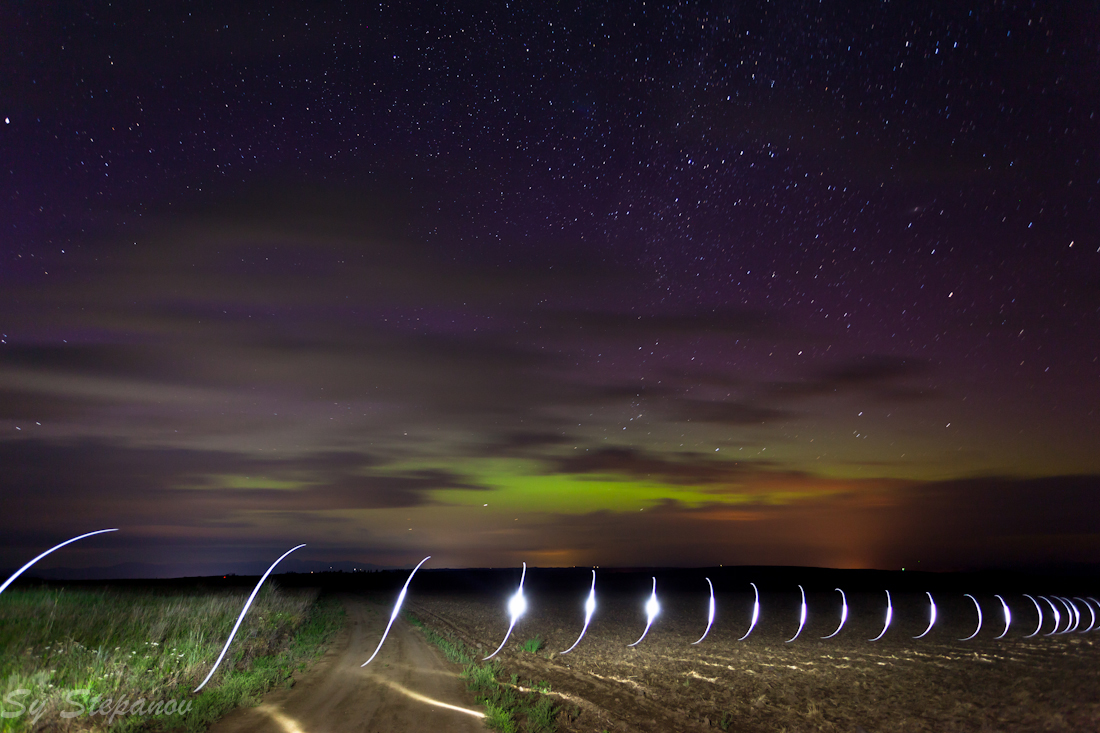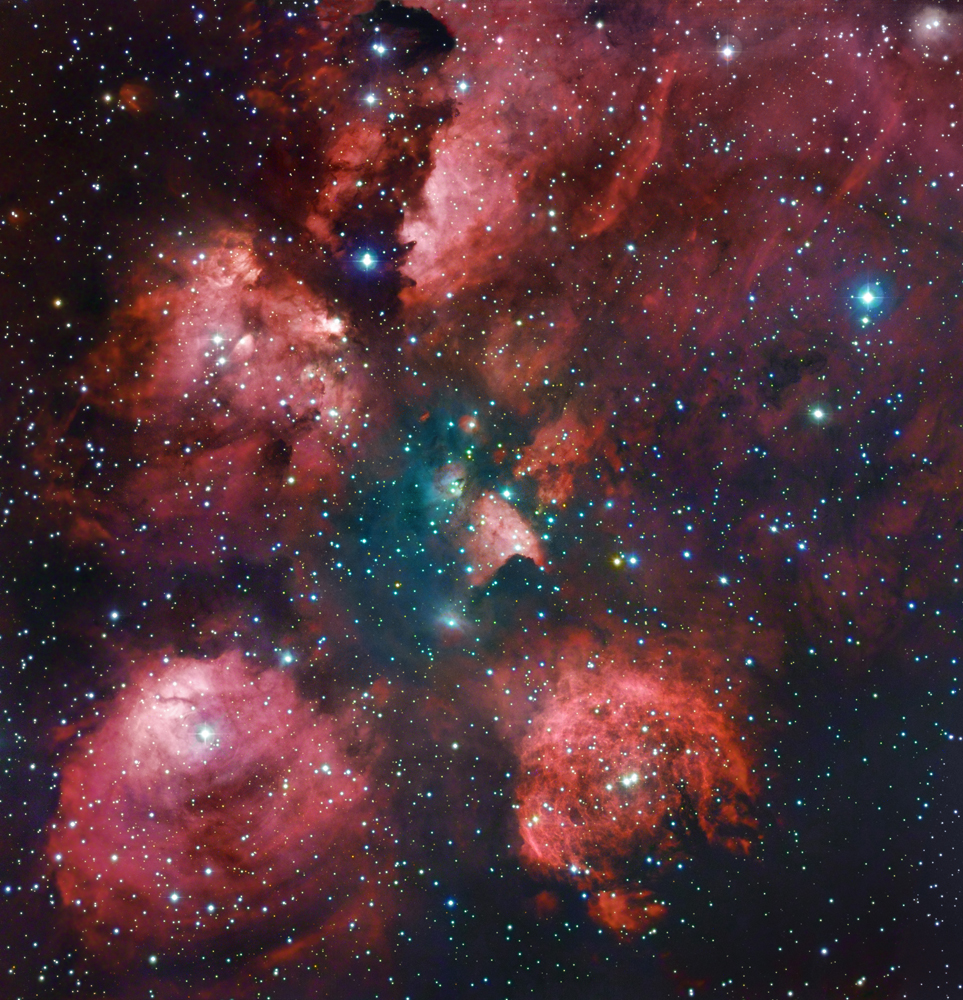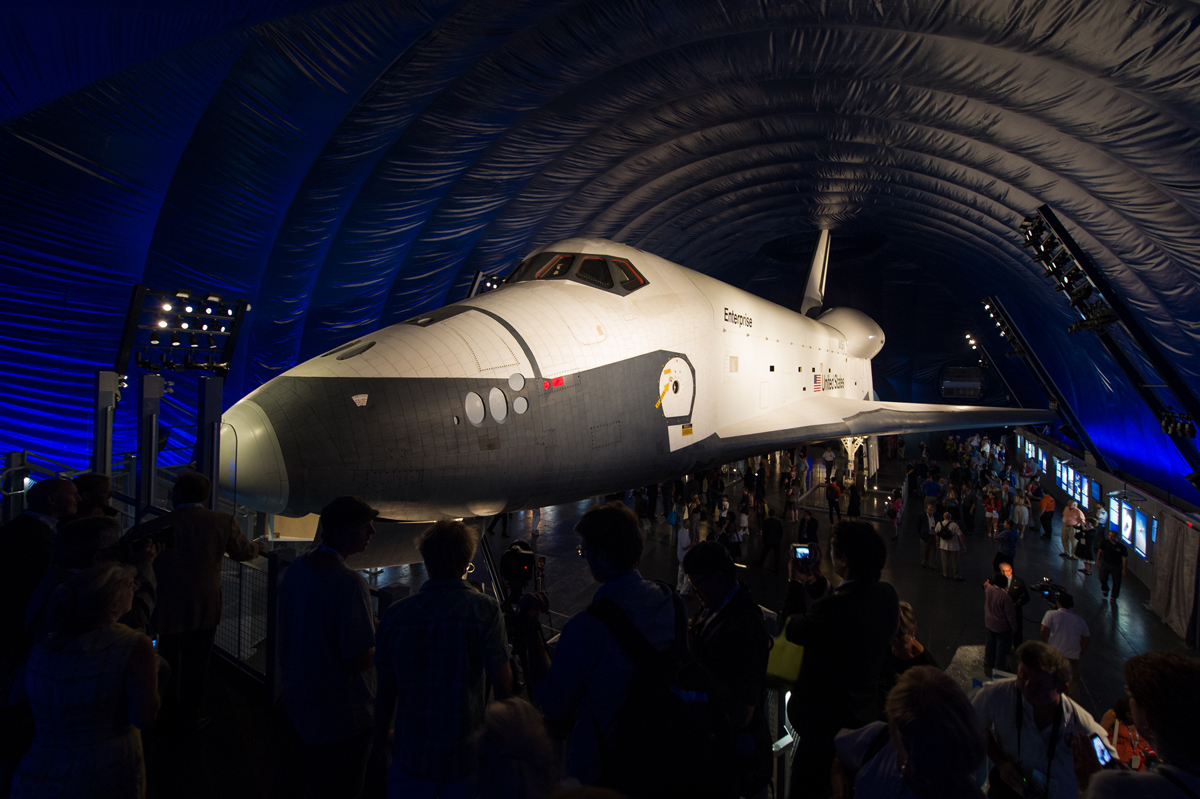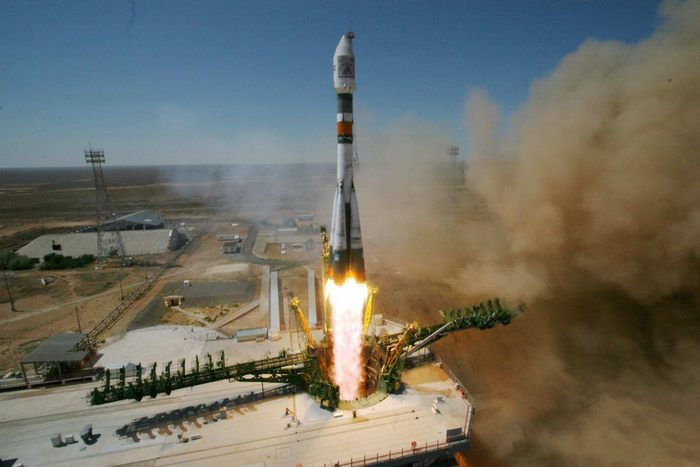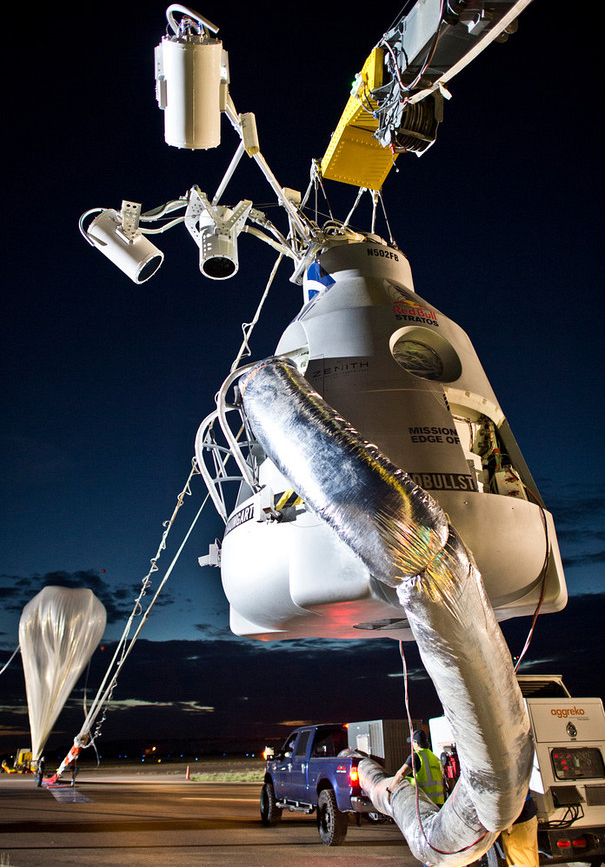Image of the Day: July 2012
Flash Light (and Aurora)
Monday, July 16, 2012: Astrophotographer Sy Stepanov took this shot of the auroral display resulting from the solar storm of July 14, 2012. The photo was taken above Lake Chelan, WA. Stepanov says the photo "is a little more creative. It involved myself running in a field during [a] long exposure while rotating a flashlight. I hope you enjoy."
— Tom Chao
Man and Nature
Tuesday, July 17, 2012: Night sky watcher Paul Zizka caught the aurora on July 9, 2012, at Lake Minnewanka, Banff National Park, Alberta, Canada. He writes: "Yet another sleepless night spent at Lake Minnewanka last night. And it was worth it. Immediately after returning to Banff from an evening ascent of Narao Peaks, I noticed the data looked good for a light show so I hastily made my way to my favorite aurora watching spot, Lake Minnewanka. The aurora danced on and off for hours. Most of the time it was barely visible to the naked eye, but now and then Mother Nature would put on a show that was hard to miss. The displays ranged from a very interesting, long-lasting pink streak directly overhead to wild green curls and purple pillars to the north and east."
— Tom Chao
Catspaw
Wednesday, July 18, 2012: A new photo of the Cat's Paw Nebula combines exposures from the MPG/ESO 2.2-metre telescope of the La Silla Observatory in Chile with 60 hours of exposures made by expert amateur astronomers Robert Gendler and Ryan M. Hannahoe. The additional colour information from Gendler and Hannahoe.brings out the faint blue nebulosity in the central region, not seen in the original ESO image. The Cat’s Paw Nebula (NGC 6334) lies in the constellation of Scorpius (The Scorpion). It is relatively near to Earth, about 5500 light-years away.
— Tom Chao
So Hold Me, Messier 99, in Your Long Arms
Thursday, July 19, 2012: This Hubble Space Telescope image shows a detailed view of the spiral arms on one side of the galaxy Messier 99. Messier 99 possesses a structure somewhat similar to the Milky Way, with long, large and clearly defined spiral arms. Astronomers refer to such a structure as a grand design spiral. Messier 99 lies around 50 million light-years away in the Virgo Cluster, the closest cluster of galaxies to us.
— Tom Chao
For Display Only
Friday, July 20, 2012: Visitors crowd around space shuttle Enterprise shortly after the grand opening of the Space Shuttle Pavilion at the Intrepid Sea, Air & Space Museum on Thursday, July 19, 2012, in New York City. The museum plans to build a permanent facility to replace the temporary pavilion.
— Tom Chao
As Long as We Are Clustered
Monday, July 23, 2012: Globular cluster Messier 5 (AKA M5 or NGC 5904) is a star cluster that lies in the constellation of Serpens, near the star 5 Serpentis, at a distance of 24,500 light years from Earth. At 13 billion years of age, it is considered one of the oldest globular clusters.
— Tom Chao
Ultra Vivid Scene
Tuesday, July 24, 2012: NASA's Chandra X-ray Observatory has discovered a new ultraluminous X-ray source, or ULX, in spiral galaxy M83,which lies about 15 million light years from Earth. The extraordinary outburst by a black hole inside the galaxy gives off more X-rays than most normal binary systems, in which a companion star orbits a neutron star or black hole.
— Tom Chao
Breaking space news, the latest updates on rocket launches, skywatching events and more!
We're Shooting Up Flares
Wednesday, July 25, 2012: On July 17, 2012, SOHO spacecraft captured an image of a huge solar flare, which unfolded over several hours.
— Tom Chao
Better Late than Never
Thursday, July 26, 2012: A Russian Soyuz-FG launch vehicle lifted off from the Baikonur space center in Kazakhstan on Sunday, July 22, 2012. The rocket carried the Russian satellites Canopus-B and MKA-PN1, a Belarusian BKA satellite, the Canadian ADS-1B and German TET-1 into orbit. The launch was postponed several times over a disagreement between Russia and Kazakhstan on where the rocket’s first stage would land after separating.
— Tom Chao
Red Bull Gives You … Capsule?
Friday, July 27, 2012: The Red Bull Stratos capsule waits for launch at the flight line in in Roswell, New Mexico, on July 25, 2012. The capsule ascended by balloon (visible in distance) carrying skydiver Felix Baumgartner on his second test jump from an altitude of 96,640 feet (29,455 meters). The Red Bull Stratos mission is an attempt to break the speed of sound in freefall.
— Tom Chao

Space.com is the premier source of space exploration, innovation and astronomy news, chronicling (and celebrating) humanity's ongoing expansion across the final frontier. Originally founded in 1999, Space.com is, and always has been, the passion of writers and editors who are space fans and also trained journalists. Our current news team consists of Editor-in-Chief Tariq Malik; Editor Hanneke Weitering, Senior Space Writer Mike Wall; Senior Writer Meghan Bartels; Senior Writer Chelsea Gohd, Senior Writer Tereza Pultarova and Staff Writer Alexander Cox, focusing on e-commerce. Senior Producer Steve Spaleta oversees our space videos, with Diana Whitcroft as our Social Media Editor.
